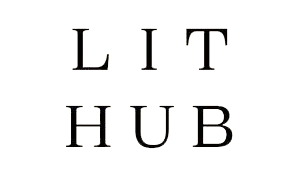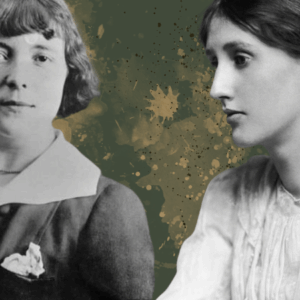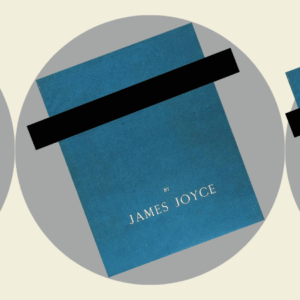
Players Upon the Page: How Directing Plays Taught Nicole Galland to Write Novels
The Author of “Boy” on Scripting, Literary Dress Rehearsals, Story Props, and More
In high school I acted in plays; in college I began to direct. Eventually my theatre resume also included acting teacher, stage manager, lighting designer, producer, dramaturg, literary manager, and founder of a traveling teen theatre company.
I was awarded a fellowship to study drama and directing at UC Berkeley. When I settled in to write my first novel—all 519 pages of it—I knew nothing about how to write a book.
But I knew how to put on a play.
When I finished The Fool’s Tale, all those years ago, I reflected back on my own process and realized—with both surprise and total lack of it—that I’d created it as if it were a theatre production. Once consciously aware of this, I applied the process to my next novel—and my next, and my next.
By the time number nine rolled around, I was intractably committed to it—the parallel process of theatre and (for me) literature.
*
To begin at the beginning: there is a script. A script, usually, communicates its story entirely with characters, their dialog and their most basic actions.
When I finished The Fool’s Tale, all those years ago, I reflected back on my own process and realized—with both surprise and total lack of it—that I’d created it as if it were a theatre production.
The director and sometimes a dramaturg (a sort of theatrical geek) approach it with due diligence: they learn about the historical background, contemporary cultural references, and all general background info. The bulk of this happens before the actors show up.
That’s an easy parallel: don’t start writing until you’ve done some research.
*
Back to the rehearsal room. The actors and director, and perhaps the dramaturg, have a table-read. Discussions follow: Are we clear about who does what to whom? Do we understand each word of dialog? Can we see the arc of the story, and its themes?
My first draft is almost nothing but dialog, with only the rudimentary movements that the dialog requires. I make sure I know what’s going on, and my chief sense of my characters is through their conversations with each other. Only when I’m clear about all that do I put them on their feet.
*
Now, in the rehearsal studio, is—you guessed it—the rehearsal process. This is where the story-telling comes to life: blocking moves the characters around, propelled by their objectives and emotions.
Once everyone knows where to go when, there’s scene work: breaking the story down into smaller beats and running through them over and over, slowly at first, picking apart every nuance of action and interaction. It’s a process of surprise and discovery.
It’s a balancing act between the director’s vision and the actors’ impulses: how fervent is Romeo and Juliet’s first kiss? At their secret wedding ceremony, is she bashful or horny or somehow both at once? Everyone came to the table with ideas about this, but scene work is what brings out the most interesting, watchable choices. It’s where the juiciness comes in.
I go through my manuscript chapter by chapter, scene by scene, lingering with the characters, prompting them to help me tell their story. Are you by a window or a stairwell when you say that, Gwiron? Godiva, how do you mount that bareback horse? Iago, is it this moment that you lose faith in Othello? Or is it this moment?
Let’s try it both ways and see which is more compelling. What had been the skeleton of a story is now fleshed out; everyone knows not only what to do, but what they’re feeling and thinking as they do it. This is bulk of the work.
*
While the rehearsal process is in full swing, the production team and tech crew are also hard at it. By the time the actors are ready to move from studio to stage, the designers are prepared to dress them and light them, to give them specific things to hold and sit upon and stand in front of.
Until tech week (sometimes known as hell week), Gertrude might drink poison from a plastic wine glass, but the props department did their homework: soon she’ll have a crystal goblet.
Likewise, in the hours I’m not communing with my characters, I’m on to more specific research: not just a cup, but a pewter mug; no generic Elizabethan gown, but something in pale yellow silk with laced-on sleeves of black velvet, over a farthingale, as well as that ruff, this headdress, and those shoes. The streets are lit with lanterns, or gaslights, or not at all. This scene will have a sunset; this, a storm.
This is the chief way in which my process seems to differ from other writers, and most cleaves to the theatre: these elements do not appear until late in the game. If you read even a third or fourth draft of any of my manuscripts, you’d think I was indifferent to setting and material culture.
I’m not indifferent; I’m sticking to the schedule I know. All these elements are sorted into categories—clothing; food; climate; shopping; religion, superstitions, hygiene—and set aside.
*
And now of course we come to tech week (did I mention that it’s sometimes called hell week?) This is a slog. All creative choices have been made; now it’s time to integrate them and test them out.
What level are the lights for this sunset, and do we have the right gels for it? In theory, that velvet dress was gorgeous but now it’s overkill against that painted backdrop. The goblet might look great but it’s too big for Gertrude’s grasp.
At my keyboard, this is where I’m all left-brain. Grab all those recent research notes.
Swap out the “meal” for a seven-course supper with venison, cheese, and bread served in the right order. Give the wherryman crossing the Thames the right kind of hat. Make sure the journey from Wales to Venice happens in the allotted time.
This isn’t a creative time, but I achieve a “clerical high” and the rewards are excellent.
*
Dress rehearsal. It all comes together. The duel is breath-taking when you add the stage blood; the one-act is mesmerizing with that laser-specific light.
The actors are buoyed by the world that has materialized around them; the immersion kicks their characters into high gear. Things might be a little clunky at first, and need to re-rehearsed before opening, but generally: wow.
This is the chief way in which my process seems to differ from other writers, and most cleaves to the theatre: these elements do not appear until late in the game.
And this becomes the last draft of my novel: complete with All The Things. The characters, literally in their elements, come to their fullest life. This is why I do it.
*
With a final lift from previews (early readers) and marketing, all is ready. The curtain rises. The characters are ready for the audience, their readers. Let the show begin.
______________________________

Boy by Nicole Galland is available via William Morrow.
Nicole Galland
Nicole Galland is the author of the historical novels I, Iago; Godiva; Crossed; Revenge of the Rose; Boy; and The Fool’s Tale; as well as the contemporary romantic comedies On the Same Page and Stepdog, and the New York Times bestselling near-future thriller The Rise and Fall of D.O.D.O. (with Neal Stephenson).



















